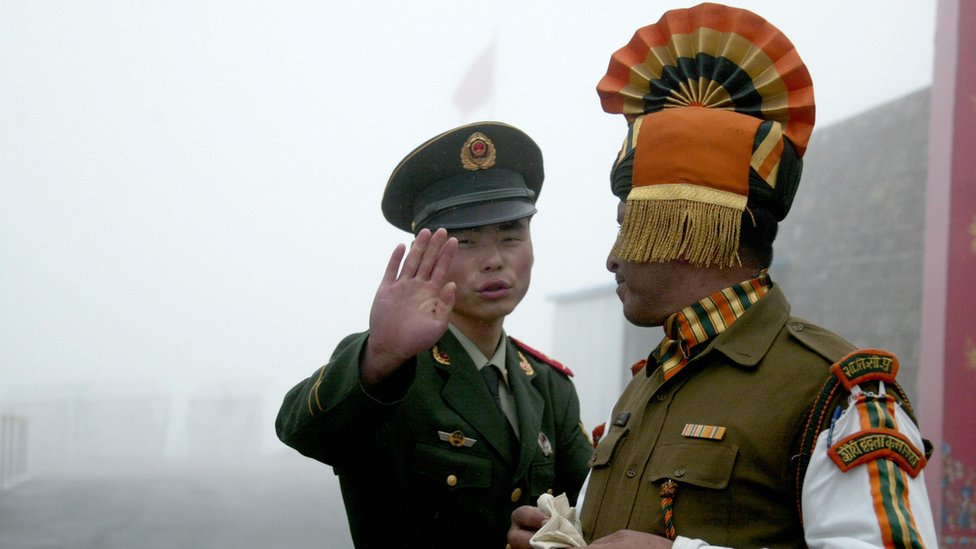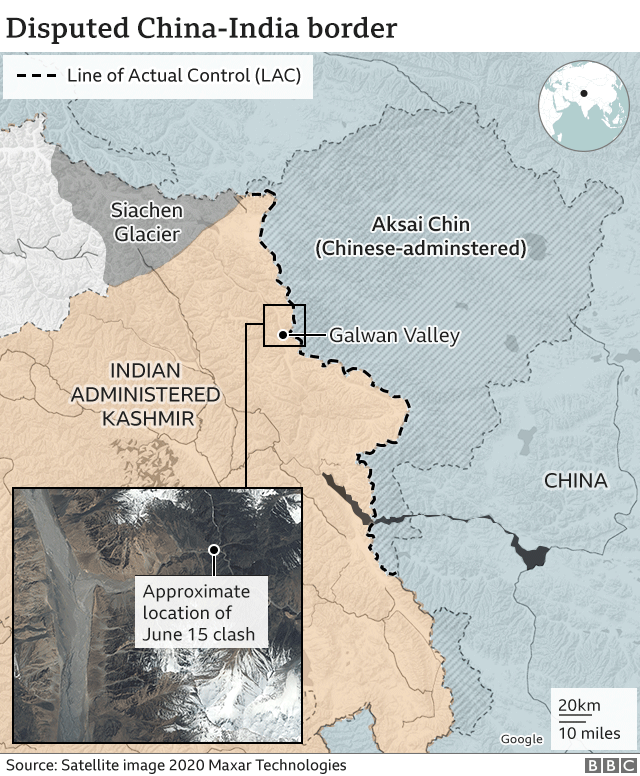
India has accused China of violating the border consensus reached between them during recent peace talks.
It said Chinese troops carried out "provocative military movements" to change the status quo in Ladakh.
At least 20 Indian soldiers died in clashes with Chinese troops in the region in June. China has not said if its soldiers also died.
The two nuclear powers accused each other of crossing the poorly demarcated border and provoking the fight.
China has denied that its troops violated the status quo.
"Chinese border troops have always strictly observed the Line of Actual Control and have never crossed the line. The border troops of the two countries have been in communication over territory issues," China's foreign ministry spokesman Zhao Lijian said.
But Delhi said that Indian troops "pre-empted" Chinese activity on "the Southern Bank of Pangong Tso Lake" on the night of 29 August.
"We undertook measures to strengthen our positions and thwart Chinese intentions to unilaterally change facts on ground," a statement from the Indian government said.
It added that Delhi was committed to peace talks but "is also equally determined to protect its territorial integrity". Analysts say that such a public announcement from India suggests that the relative peace on the border has been broken.
What happened in June?
Media reports said troops clashed on ridges at a height of nearly 4,300m (14,000ft) on steep terrain, with some Indian soldiers falling into the fast-flowing Galwan river in sub-zero temperatures.
At least 76 Indian soldiers were reportedly injured in addition to the 20 dead. China has not released any information about casualties on its side.
The fighting took place without any firearms because of a 1996 agreement barring guns and explosives from the area.



Since then, the two sides have held several military-level and diplomatic talks to resolve the issue. But both sides continue to accuse each other of not stopping construction at the border.
Minor clashes have also been reported and analysts say the situation has remained fluid in the region since June.
Why did the troops clash?
The Line of Actual Control, as the disputed border between the two nations is known, is poorly demarcated. The presence of rivers, lakes and snowcaps mean the line can shift.
The soldiers on either side - representing two of the world's largest armies - come face to face at many points. India has accused China of sending thousands of troops into Ladakh's Galwan valley and says China occupies 38,000sq km (14,700sq miles) of its territory. Several rounds of talks in the last three decades have failed to resolve the boundary disputes.
The two countries have fought only one war so far, in 1962, when India suffered a humiliating defeat.
There are several reasons why tensions have risen recently - but competing strategic goals lie at the root, and both sides blame each other.
India's new road in what experts say is the most remote and vulnerable area along the border in Ladakh could boost Delhi's capability to move men and materiel rapidly in case of a conflict.
Analysts say India's decision to ramp up infrastructure seems to have infuriated Beijing.
Related Topics
https://news.google.com/__i/rss/rd/articles/CBMiNGh0dHBzOi8vd3d3LmJiYy5jby51ay9uZXdzL3dvcmxkLWFzaWEtaW5kaWEtNTM5NzEzOTfSAThodHRwczovL3d3dy5iYmMuY28udWsvbmV3cy9hbXAvd29ybGQtYXNpYS1pbmRpYS01Mzk3MTM5Nw?oc=5
2020-08-31 07:13:14Z
52781028498638
Tidak ada komentar:
Posting Komentar